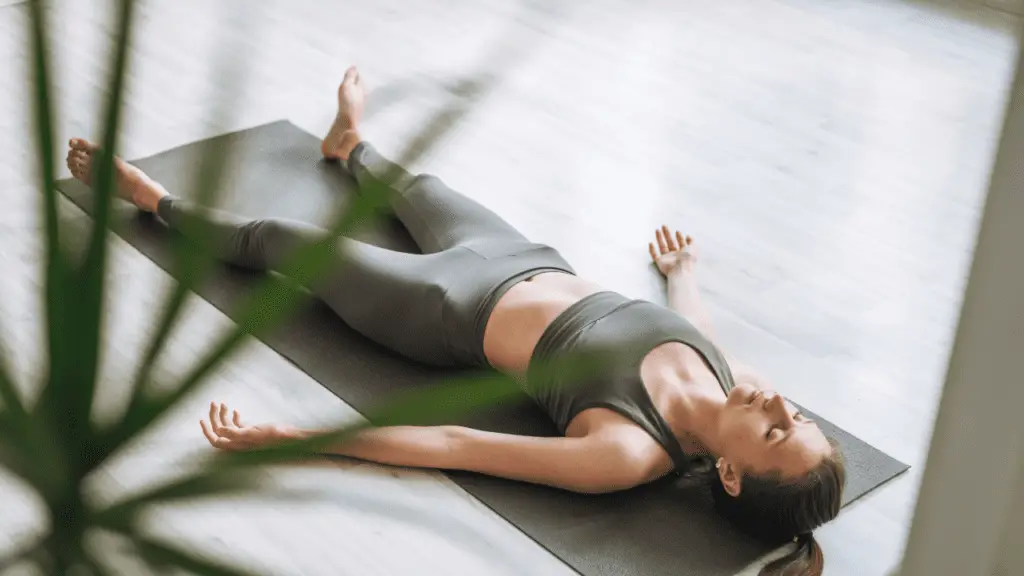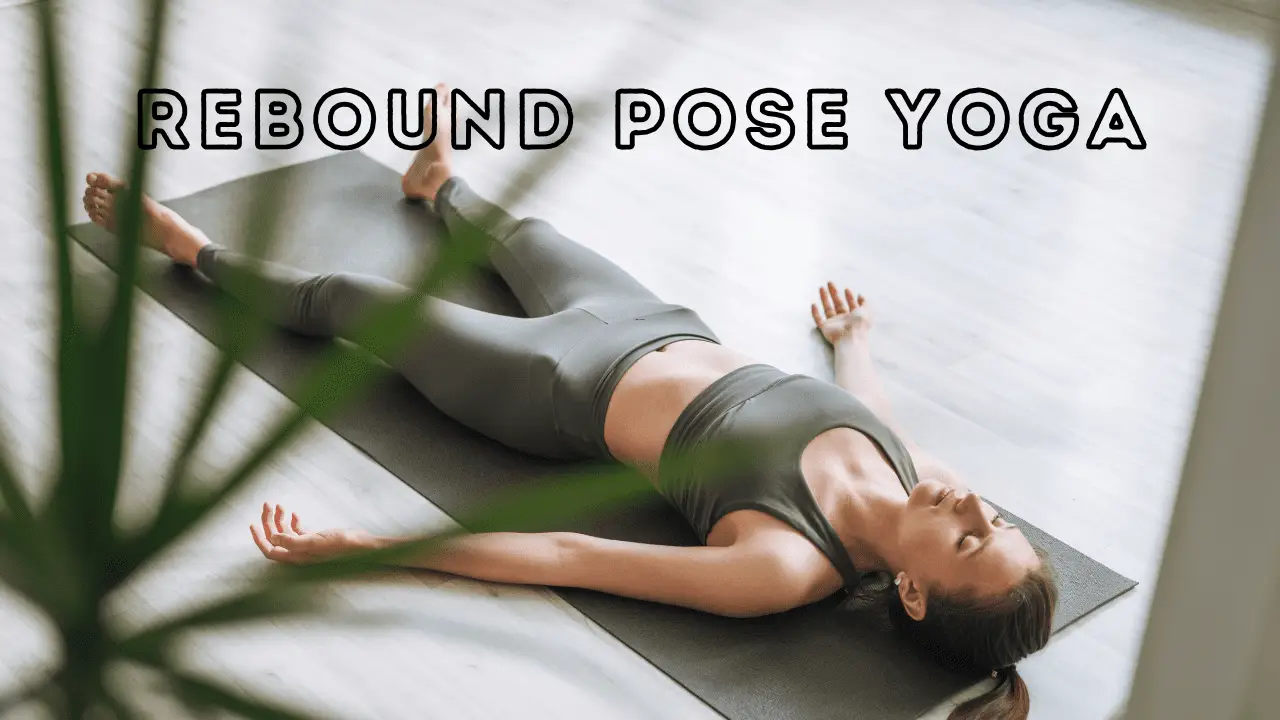Welcome to the enchanting world of Rebound Pose Yoga, a playful yet profoundly restorative practice that caters to both yoga novices and experienced practitioners alike. Known as ‘Viparita Karani,’ this pose invites you to turn your world upside down in a nurturing way, encouraging blood flow back to the heart and allowing you to explore the world from a different perspective. Let’s delve into this yoga gem, uncover its myriad benefits, understand the simple steps to execute it, and explore some joyful variations to keep your practice vibrant and lively.
What is Rebound Pose Yoga?
Rebound Pose Yoga involves lying on your back and extending your legs up against a wall, effectively creating a gentle inversion. This pose, also known as the ‘legs up the wall’ pose, is often practiced at the end of a yoga session to facilitate relaxation and recovery. The traditional Sanskrit name, ‘Viparita Karani,’ suggests the rejuvenating effects of inverting the usual order of the body, which according to yoga philosophy, can revitalize the whole system.

Warm-up Before Yoga
Warming up before yoga is essential to prevent injuries and enhance flexibility. Begin with gentle stretches targeting key areas like the hamstrings, shoulders, and back. Simple movements like neck rolls and leg swings prepare your muscles and mind for a deeper, safer yoga practice.
How to Perform Rebound Pose
- Find a Quiet Space: Choose a quiet part of your home where you won’t be disturbed.
- Position Yourself: Sit with your side against the wall, then gently lie on your back and start to pivot your legs upward along the wall.
- Adjust Your Position: Shuffle your hips closer to the wall so that your buttocks and legs are fully supported against it.
- Relax and Breathe: Let your arms rest by your sides or on your abdomen and focus on deep, rhythmic breathing to enhance the relaxation effects of the pose.
- Check Alignment: Ensure that your legs are straight and your spine is aligned in a natural position. If needed, adjust your distance from the wall until you feel comfortable.
- Hold and Enjoy: Remain in the pose for 5 to 15 minutes, allowing your mind and body to relax deeply. Focus on the sensation of your breath and the gentle release of tension throughout your body.
Curious about more yoga poses? Check out our detailed guide on “Egg Yoga Pose” for another enriching addition to your practice!
Health Benefits of Rebound Pose
This seemingly simple pose offers an impressive range of health benefits:
- Improves Circulation: The gravity-assisted return of blood to the heart can help improve circulation and increase vascular health.
- Reduces Swelling and Edema: For those who spend long hours on their feet, this pose can reduce swelling in the legs and feet by facilitating venous drainage.
- Enhances Digestion: The gentle inversion helps stimulate the abdominal organs, thereby aiding digestion and alleviating problems like bloating.
- Relieves Stress: The pose impacts the parasympathetic nervous system, promoting relaxation and reducing stress and anxiety levels.
Tips to Improve Your Rebound Pose
- Add Cushions for Comfort: Placing a cushion or folded blanket under your hips can increase comfort and elevate the hips slightly, deepening the pose’s effects.
- Mind Your Hamstrings: If you feel tightness in your hamstrings, allow a slight bend in the knees or move your buttocks farther from the wall to reduce tension.
- Breath Work: Integrating deep, mindful breathing into the pose can significantly enhance its stress-relieving and meditative benefits.
Creative Variations of Rebound Pose
- With Bent Knees: This variation reduces the intensity for those with tight hamstrings or lower back issues.
- Butterfly Legs: By placing the soles of your feet together and letting your knees fall to the sides, you can stretch the inner thighs and hips.
- Supported Hips: Placing a yoga block or bolster under the hips can increase the inversion’s effects, offering deeper relaxation.
Use of Props in Rebound Pose
Integrating props such as yoga blocks, bolsters, or blankets can transform your Rebound Pose experience by providing additional support, alignment, and comfort. These tools are particularly helpful for those with back issues or tight hamstrings, as they allow for adjustments that make the pose more accessible and beneficial.
Emotional and Spiritual Gains from Rebound Pose
This pose offers more than physical benefits; it’s a sanctuary for emotional and spiritual rejuvenation. By inverting the body, you encourage a different perspective not just physically but mentally, offering a pause to your day and space for introspection and calmness.
Curious about more yoga poses? Check out our detailed guide on “Stargazer Yoga Pose” for another enriching addition to your practice!
Cultural Nuances and Humor in Yoga Practice
Yoga often incorporates humor and cultural references to deepen the practice’s enjoyment and accessibility. Instructors might playfully refer to Rebound Pose as giving you a new perspective on life or joking about using the pose to ‘put your feet up and relax,’ integrating light-heartedness into the practice.
Cautionary Advice for Rebound Pose
Individuals with certain health conditions such as high blood pressure, heart ailments, or eye issues like glaucoma may need to avoid inversions like Rebound Pose. Always consult with a healthcare provider before starting any new yoga practice, especially if you have underlying health concerns.
Conclusion
- Physical Health: Boosts circulation and aids digestion.
- Mental Well-being: Reduces stress and promotes calm.
- Accessibility: Suitable for all levels with adaptable variations.
- Mindfulness: Encourages introspection and emotional awareness.
- Safety: Safe for most, but consult a doctor if unsure.
Rebound Pose Yoga is a wonderful way to conclude your yoga session, offering a unique combination of relaxation, invigoration, and fun. It’s a pose that invites you to slow down, breathe deeply, and enjoy a moment of tranquility in your busy life. So, why not give it a try and experience the multitude of benefits for yourself? Happy practicing!

